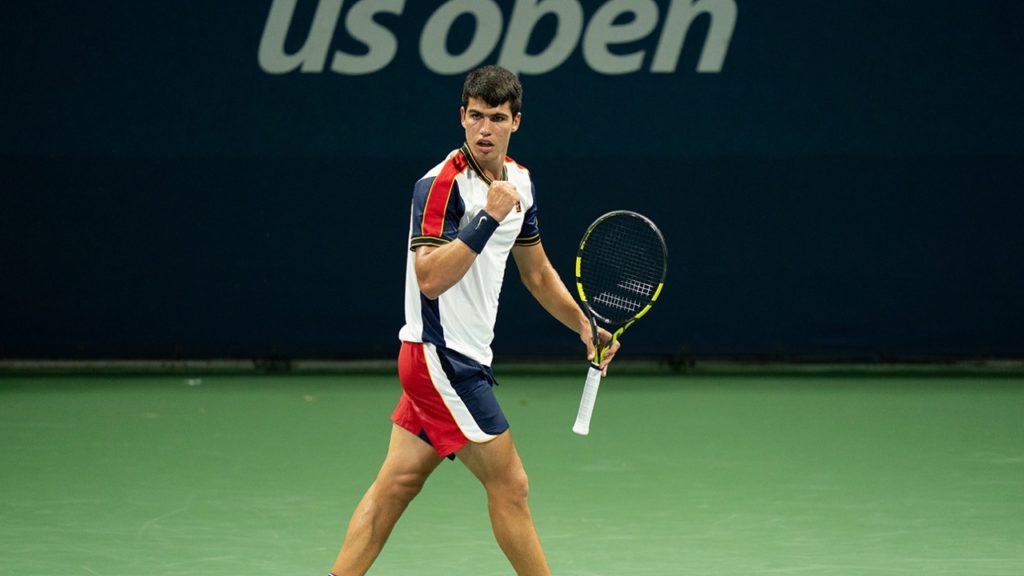Tennis is an incredibly physically demanding sport, which places huge demands on its professional players. Not only is fitness ever more important to cope with the grueling schedule, but players also have to continually hone and practice their techniques or risk slipping down the rankings.
Many of the very best players were trained from an early age, as the sooner the right techniques are engrained in a player’s tennis habits, the easier it is for them to compete at the highest level. Talent itself is not enough, and there are many supremely talented young players who don’t fulfill that potential.
Being able to spot an individual’s true potential before anyone else, and being able to predict which young players will go on to become champions, is an important skill for both tennis pundits and tennis bettors.
In fact, if you are betting on tennis or claiming one of the many betting offers available to tennis bettors, correctly identifying the stars of the future can prove to be profitable.
If you were one of those bettors who spotted the potential of Roger Federer or Rafael Nadal early on, for example, you would have been able to bet on those legends at a point in their careers when their genius was not widely known, before bookmakers began to cut their odds.
Yet, putting a young person through the necessary intensive training to build the foundation for a career at the top of tennis comes with risks. The pressures put on youngsters who are aiming at a professional career can be enormous, at a time when most of their peers are enjoying free time and leisure.
While we may marvel at the prodigious talents of teenagers who compete for Tour wins, there is a very obvious danger. Many players have spoken about the problem of physical and mental burnout among younger stars, and this leads to concerns that the sport is asking too much at ever younger ages.
Teenage stars, such as Carlos Alcaraz and Cori Gauff, inevitably grab the headlines, and when two or three of them emerge at the same time, the questions about how tennis treats young players resurface, along with the idea that tennis stars are getting younger. But how true is that?
The average age of tennis retirements is significantly under 30, which is lower than pretty much any other sport, but that doesn’t tell us about the trends.
Fortunately, there are some helpful stats out there. A survey by a tennis magazine in 2017 found that the average retirement age for the ATP top 100 players averages 28.26. For the WTA, it was even lower, at 25.8. Those are figures that would be considered low by any sports standard.
They are put in perspective, however, by going back further and looking at the 1987 figures. They showed an ATP retirement average age of 23.74, and for the WTA, it was 22.56. Based on those stats, tennis players are certainly playing for longer.
There are also some high-profile examples of players continuing to play at the very top level well beyond the average retirement age. Although Ken Rosewall remains the oldest player to win a Grand Slam, at 37, Roger Federer is not far behind, at 36, while Serena Williams also played past 40.
Perhaps this apparently increased longevity is the result of improved fitness, which extends the average career, rather than players reaching their peak at a later age.
Another report, published in the International Journal of Performance Analysis in Sport in 2015, looked instead at the average age of players in the top 100 of the men’s and women’s games, comparing figures taken from 1984 and 2013.
The report found that the average age of men in the top 100 rose from 24.6 to 27.6 between 1984 and 2013, while for women players in the top 100, there was a smaller rise from 23.5 to 24.8.
Again, it is possible that these figures are reflective of greater fitness levels and advances in sports injury, nutrition, and psychology, as well as increasing financial opportunities that make a career as a top 100 player more viable. But they certainly don’t appear to show that professional players are getting younger.
Anecdotally, it also feels as though players are peaking later in their careers. Many top players of the modern era hit their best form in the mid-late 20s, rather than the early-mid 20s. And of the youngest 10 Grand Slam winners in tennis history, only Rafael Nadal and Maria Sharapova were in the 21st century.
It is right that anyone who loves tennis takes the impact seriously that training for, and playing the game at the top level, can have on young players. In particular, there has been an increasing awareness of the impact of mental health and well-being, which is very welcome.
The concern that tennis players are getting younger, however, is not valid. Tennis players appear to be playing for longer and peaking later than they did 20 to 30 years ago, which is good news as it means that we get to enjoy watching the best of their generation for longer.

